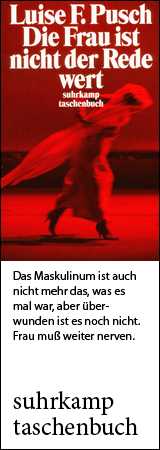
(Ann Lane [Geburtsname])
born Oktober 12, 1908 in Old Saybrook, CT
died April 28, 1997 in Old Saybrook, CT
American writer
105th birthday on October 12, 2013
Biography • Literature & Sources
Biography

African American writer Ann Lane Petry skillfully illuminated the range of black and white American experience in her novels, short stories, and other works. The Street, her most famous novel, was a hard-hitting social commentary on the despair of black urban life in the 1940s. Published in 1946, the novel sold 1.5 million copies and brought Petry to national attention. The impact of Petry's writing continues to be appreciated: literary critics praise her as the most successful follower of the 1940s “Richard Wright school” of urban protest writing; and black feminists cite The Street as the first African-American novel in which motherhood is a major theme. In addition, black feminists commend Petry for showing through The Street 's main character, Lutie, that a lack of connection to self and community can result in one's downfall.
Ann Petry's birth date is not certain: earlier biographers place her birth on October 12, 1911, while later chroniclers state it as October 12, 1908. In any case, she was born in Old Saybrook, Connecticut, a predominantly white, rural community. Ann was the second daughter of Peter C. Lane, pharmacist, and Bertha James Lane, licensed chiropodist, barber, and entrepreneur. Ann's family was solidly middle class, including two college educated aunts, and several generations of pharmacists. The Lanes often told autobiographical and fictional stories while she was growing up, and Ann began writing short stories and plays while she was still in high school.
After graduating from Connecticut College of Pharmacy in the early 1930s, Ann worked at the family drugstore for several years. In 1938, she married George D. Petry, a New York mystery writer, and moved to New York City. Ann soon found a job as an advertising salesperson and reporter for the Amsterdam News and The People's Voice, two Harlem newspapers. Her first published short story, “Marie of the Cabin Club”, appeared in a 1939 edition of The Afro American, under a male pseudonym, Arnold Petry. Starting in 1943, The Crisis, Opportunity, and other black journals published more of her short stories under her own name, including “On Saturday the Siren Sounds at Noon” (1943) and “In Darkness & Confusion” (1947, about the Harlem riot of 1943). Martha Foley printed Petry's story “Like A Winding Sheet” (1946) in the Best American Short Stories of 1946 and dedicated the volume to Ann. In 1945, Petry won the Houghton Mifflin Literary Fellowship for the beginning chapters of her first novel, The Street.
By 1944 Ann had taken a job at the New York Foundation, where she worked on a sociological study of the effect of segregation on ghetto children. During the next four years, she led an active civic life, including painting, acting, playing the piano, teaching a course at the NAACP (National Association for the Advancement of Colored People), and serving as a recreational specialist at a Harlem elementary school. According to Petry herself, the content of her early fiction was heavily influenced by the inner city life she witnessed as a reporter, social worker, and involved community member. In an article in the February 1946 issue of The Crisis, Petry said that with the publication of The Street,
my aim is to show how simply and easily the environment can change the course of a person's life ... I try to show why the Negro has a high crime rate, a high death rate, and little or no chance of keeping his [sic] family unit intact in large northern cities.
In 1948, Ann and her husband returned to Connecticut to continue writing and raise their daughter, Elisabeth Ann. At this point Petry began to write about life in the smaller towns of New England, as reflected in her novels Country Place (1947), about white characters afraid of the inevitable changes of life; and The Narrows (1957), about a doomed interracial love affair. During these years Petry also wrote a children's book, The Drugstore Cat (1949), and two historical novels, Harriet Tubman: Conductor on the Underground Railroad (1955) and Tituba of Salem Village (1963), in order to increase young adults' knowledge of and pride in black women's achievements. A collection of her short stories, Miss Muriel & Other Stories, was published in 1971. Over the course of her life, Petry lectured widely throughout the United States, and her contribution to literature was acknowledged by membership in the Author's Guild and other literary societies, and honorary doctorates from several colleges and universities. Ann Petry died April 28, 1997, near her home in Old Saybrook, after a brief illness.
Author: Sarah K. Horsley
Literature & Sources
Websites
Holladay, Hilary: Ann Petry. Heath Anthology of American Literature.
O'Donnell, Heather: Ann Petry. Biography / Criticism. Voices from the Gaps: Women Writers of Color. Minneapolis : University of Minnesota, Department of English and Program in American Studies.
Books
Barrett, Lindon (1999): Blackness and value. Seeing double. Cambridge: Cambridge Univ. Press (Cambridge studies in American literature and culture, [117).
Bone, Robert A. (1965): The Negro novel in America. New Haven: Yale University Press.
Brown, Lloyd Wellesley (1974): Tituba of Barbados and the American conconscience. Historical perspectives in Arthur Miller and Ann Petry. In: Caribbean Studies (Río Piedras), Jg. 13, H. 4, S. 118–126.
Christian, Barbara (1997): Black feminist criticism. Perspectives on Black women writers. New York, N.Y.: Teachers College Press (The Athene series).
Davis, Arthur Paul (1982): From the dark tower. Afro-American writers, 1900 to 1960. Washington, DC: Howard Univ. Press.
Ervin, Hazel Arnett (1993): Ann Petry. Abio-bibliography. New York: Hall [u.a.].
Ervin, Hazel Arnett (1993): The subversion of cultural ideology in Ann Petry's “the street” and “country place”. Dissertation. Washington, DC. Howard University.
Ervin, Hazel Arnett (2005): The critical response to Ann Petry. Westport, Conn.: Praeger (Critical responses in arts and letters, 44).
Ervin, Hazel Arnett; Holladay, Hilary (2004): Ann Petry's short fiction. Critical essays. Westport, Conn.: Praeger (Contributions in Afro-American and African studies, 209).
Henderson, Carol E. (1995): The body of evidence - reading the scar as text Williams, Morrison, Baldwin, and Petry. Dissertation. Riverside. Univ. of California.
Hine, Darlene Clark (2005): Black women in America. Oxford: Oxford Univ. Press.
Holladay, Hilary White (1994): Holding together, breaking apart. Communities and relationships in Ann Petry's fiction. Dissertation. Chapel Hill. Univ. of North Carolina.
Holladay, Hilary (1996): Ann Petry. New York: Twayne Publishers [u.a.] (Twayne's United States authors series, TUSAS 667).
Isaacs, Diane Scharfeld (1982): Ann Petry's life and art. Piercing stereotypes. Dissertation. New York. Columbia Univ. Teachers College.
Lubin, Alex (2007): Revising the blueprint. Ann Petry and the literary left. Jackson: University Press of Mississippi.
O'Banner, Bessie Marie (1981): A study of Black heroines in four selected novels 1929-1959 by four Black American women novelists. Zora Neale Hurston, Nella Larsen, Paule Marshall, Ann Lane Petry. Dissertation. Carbondale, Ill. Southern Illinois Univ.
Petry, Ann (1970): Legends of the Saints. Harpercollins Juvenile Books.
Petry, Ann (1971): Country place. Chatham: Chatham Bookseller.
Petry, Ann (1988, 1949): The drugstore cat. Boston: Beacon Press.
Petry, Ann (1988, 1953): The Narrows. Boston: Beacon Press (Black women writers series).
Petry, Ann (1991): Tituba of Salem Village. New York, NY: Harper Collins.
Petry, Ann (1996): Harriet Tubman. Conductor on the Underground Railroad. New York: Harper Trophy.
Petry, Ann (1998): The street. Boston: Houghton Mifflin Co (Mariner Books).
Petry, Ann (1999): Miss Muriel and other stories. Boston: Houghton Mifflin.
Petry, Elisabeth (2005): Can anything beat white? A Black family's letters. Jackson: University Press of Mississippi.
Pryse, Marjorie; Spillers, Hortense J. (1985): Conjuring. Black women, fiction, and literary tradition. Bloomington, Ind.: Indiana Univ. Press (Everywoman).
Puri, Usha (1989): Towards a new womanhood. Astudy of black women writers. Jaipur, India: Printwell Publishers.
Ramm, Hans-Christoph (1989): Modell für eine literarische Amerikakunde. Zugänge zum modernen schwarzamerikanischen Roman am Beispiel von Ann Petrys 'The street', James Baldwins 'Go tell it on the mountain' und Ralph Ellisons 'Invisible man'. Frankfurt am Main: Lang (Europäische HochschulschriftenReihe 14, Angelsächsische Sprache und Literatur, 195).
Reynolds, Clarence V. (2002): Ann Lane Petry - tribute. In: Black Issues Book Review, H. July/August 2002.
Royster, Beatrice Horn (1975): The ironic vision of four black women novelists. A study of the novels of Jessie Fauset, Nella Larsen, Zora Neale Hurston, and Ann Petry. Dissertation. Atlanta. Emory Univ.
Shockley, Evie: Buried alive : gothic homelessness, black women's sexuality, and death in Ann Petry's The Street. Critical essay. In: African American Review, H. Fall 2006.
If you hold the rights to one or more of the images on this page and object to its/their appearance here, please contact Fembio.


















